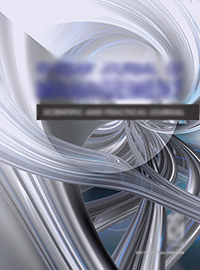Voronezh, Voronezh, Russian Federation
Voronezh, Voronezh, Russian Federation
Treatment of hypervascular formations is challenging surgery. The solution of this problem is due to use a multidisciplinary approach, involving complex endovascular and surgical treatments. Patho-morphological study of remote hypervascular formations in treatment was carried out. That treatment consisted of an endovascular embolotherapy and an endovasal sclerotherapy in various combinations. The embolization of blood vessels leads to a complete reduction of blood flow in the formation area, the development of diffuse inflammatory infiltration in the background on tissue ischemia. In the future, developing ischemic necrosis fol-lowed by scarring of tissue surrounding the vascular formation. Sclerotherapy causes damage to the vascular endothelium with fibrin formation and hemolysis of red blood cells in the lumen of the veins. Moreover, there are a significant fibrosis, hyalinosis and inflammatory reaction of the tissues surrounding the vessels. Further development of this process leads to a final sclerosis and fibrotic scarring of the surrounding tissues. The combi-nation of endovascular embolization and sclerotherapy allows to achieve a reduction of blood flow in the arterial vascular malformation department and to cause a tissue fibrosis in the cavernous malformations. Endovascular therapy reduces the risk of bleeding in surgery and develops the capacity of radical treatment.
hypervascular formations, endovascular embolotherapy, endovasal sclerotherapy, multidisciplinary approach, patho-morphological study.
1. Sovremennye tendentsii v diagnostike i lechenii arteriovenoznykh angiodisplaziy / Dan V.N., Kokov L.S., Karmazanovskiy G.G. [i dr.]. Vestnik Rossiyskoy akademii meditsinskikh nauk. 2010. №10. S.20-25.
2. Korotkikh N.G., Ol´shanskiy M.S., Stepanov I.V. Mul´tidistsiplinarnyy podkhod k lecheniyu obshirnykh angiodisplaziy litsa i shei. Vestnik novykh meditsinskikh tekhnologiy. 2011. №2. S. 357-359
3. Korotkikh N.G., Ol´shanskiy M.S., Stepanov I.V. Kombinirovannoe endovaskulyarnoe i khirur-gicheskoe lechenie gemangiomy kornya yazyka. Vestnik khirurgii imeni I.I. Grekova. 2012. T. 171, №2. S. 89-92.
4. Korotkikh N.G., Stepanov I.V., Ol´shanskiy I.V. Ispol´zovanie printsipov mul´tidistsipli-narnogo podkhoda v postroenii taktiki lecheniya obshirnykh angiodisplaziy smeshannogo tipa. Vestnik novykh meditsinskikh tekhnologiy. 2012. T. 19, №2. S. 157-159.
5. Sapelkin S.V. Optimizatsiya diagnosticheskoy i lechebnoy taktiki u bol´nykh angiodisplaziya-mi: Avtoref. diss... d.m.n.: Moskva, 2009. 45 s
6. Histopathologic and immuno-phenotypic profile of subglottic hemangioma: multicenter study./ Badi A.N., Kerschner J.E., North P.E. [et al.]. Int J Pediatr Otorhinolaryngol. 2009. 73. P. 1187-1191.
7. Gavin CW Kang, Colin Song Forty-one cervicofacial vascular anomalies and their surgical treatment - retrospection and review. Ann acad med Singapore. 2008. № 37. R. 165-179.
8. Goh S.G., Calonje E. Cutaneous vascular tumours: an update. Histopathology. 2008. V. 52. № 6. P. 661-673.
9. Greene A.K. Vascular Anomalies: current overview of the field. Clin Plast Surg. 2011. 38. R. 1-5.
10. Laurence M. Classification and clinical diagnosis of vascular anomalies. Matherials of 6th North Sea Meeting on Venous Diseases. Anthverpent, 2007. P. 9.
11. : Management of arteriovenous malformations. a multidisciplinary approach/ Lee B.B., Do Y.S., Yakes W. [et al.]. J Vase Surg. 2004. 39. P. 590-600.
12. Pappas D.C., Persky M.S., Berenstein A. Evaluation and treatment of head and neck venous vascular malformations. Ear Nose Throat J. 1998. 77. P. 914-922.
13. Persky M.S., Yoo H.J., Berenslein A. Management of vascular malformations of the mandible and maxilla. Laryngoscope. 2003. 13. P. 1885-1892.
14. Sreevathsa M.R., Lalitha R.M., Prasad K. Arteriovenous malformations of the head and neck: expe-rience with magnetic resonance angiography and thera¬peutic embolisation. Br J Oral Maxillofac Surg. 2003. 41. P. 75-77.
15. Tille J.-C., Pepper M.S. Hereditary vascular anomalies new insights into their pathogenesis. Arteri-oscler. Thromb. Vasc. Biol. 2004. Vol. 24. P. 1578-1590.





